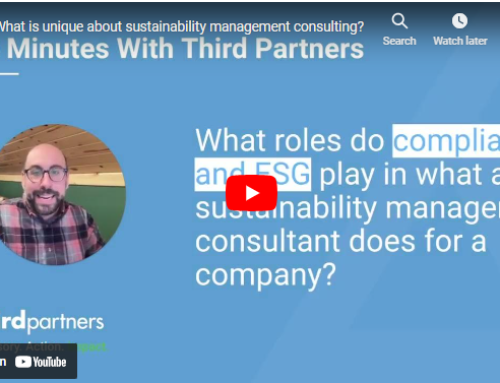
Because this external pressure is relatively new, most companies have yet to develop best practices for collecting and analyzing their ESG data. Sustainability managers may have processes in place, but in our experience they suffer from headaches when it’s time to improve data quantity and quality, and scratch more than the surface with analytics.
These headaches are an issue of corporate evolution. And most companies haven’t yet fully adapted. We view developing best practices for ESG data like corporate sustainability itself, as a journey, not a destination. In our experience, companies typically go through three phases in generating value from their ESG data (see figure below).
Data driven transformation is the pinnacle and few companies, such as 3M, Adidas and Ecovative Design, have reached this phase. One practice they have in common is maximizing their use of data to develop new products, open new markets and grow top line sales.
While transformation may be implied, stakeholders such as investors increasingly cite key reasons like long-term performance for taking sustainability data seriously. It stems from the old business adage about managing what you can measure. It’s not just about measuring, but how you measure and what you do with your data. For us, the what is about using detailed ESG analytics as a lens to drive internal decision-making. Companies accomplish this with robust data collection, analytics and sharing it across functions.
Not every company will use sustainability as a tool for transformation, but every company can use ESG data to reduce risks and costs. The first step is evaluating data currently collected, identifying data gaps, and applying the right analytics. We have helped clients along this journey to reduce numerous ESG indicators resulting in reduced costs and risks.
Sustainability only becomes good business when you put your data to work. Contact us if you’d like to learn more about developing best practices to maximize your ESG data.



